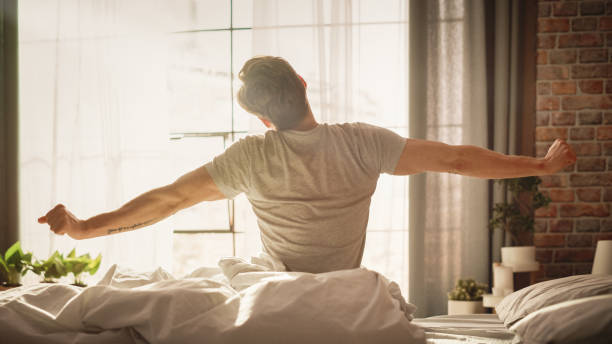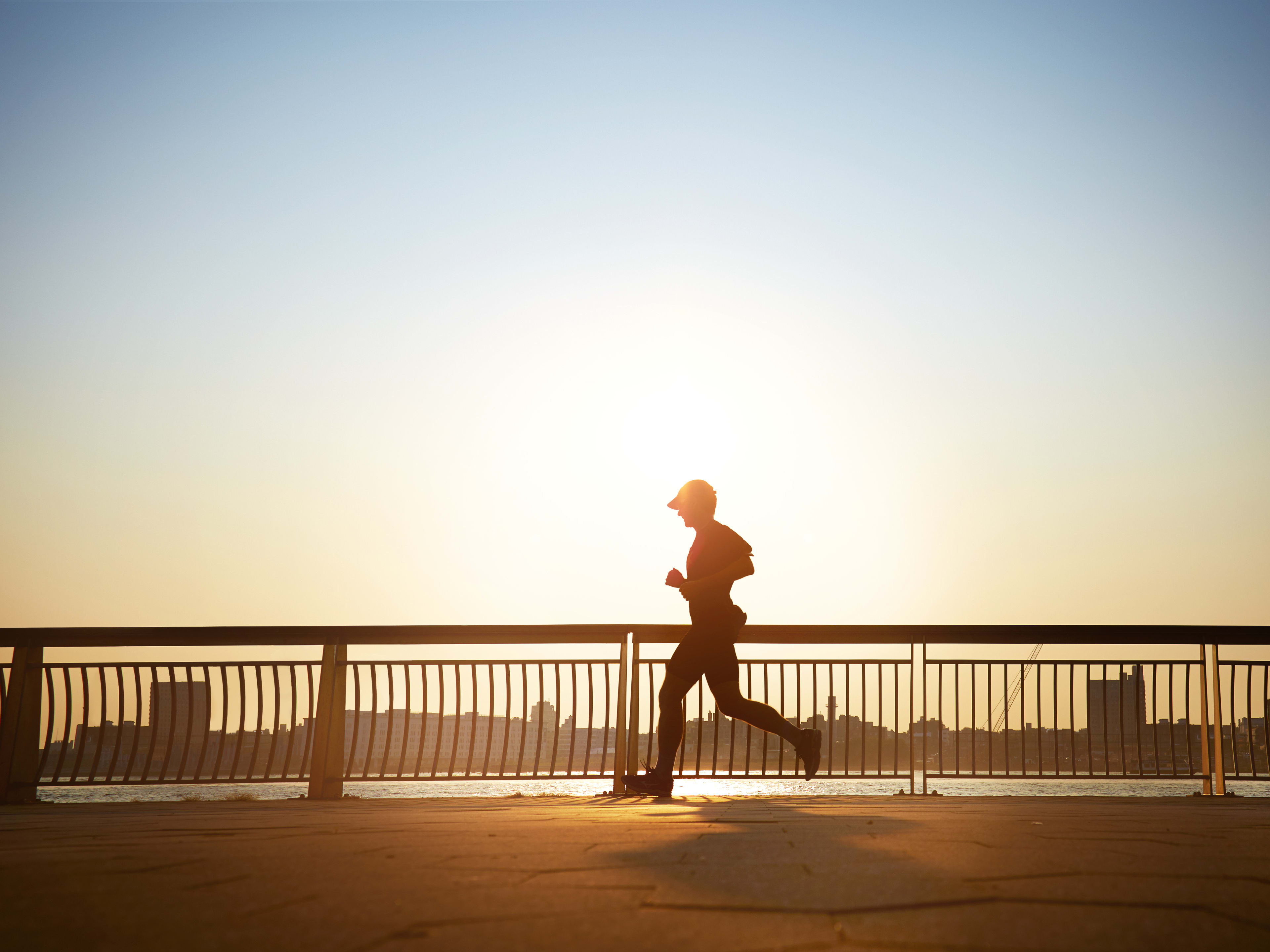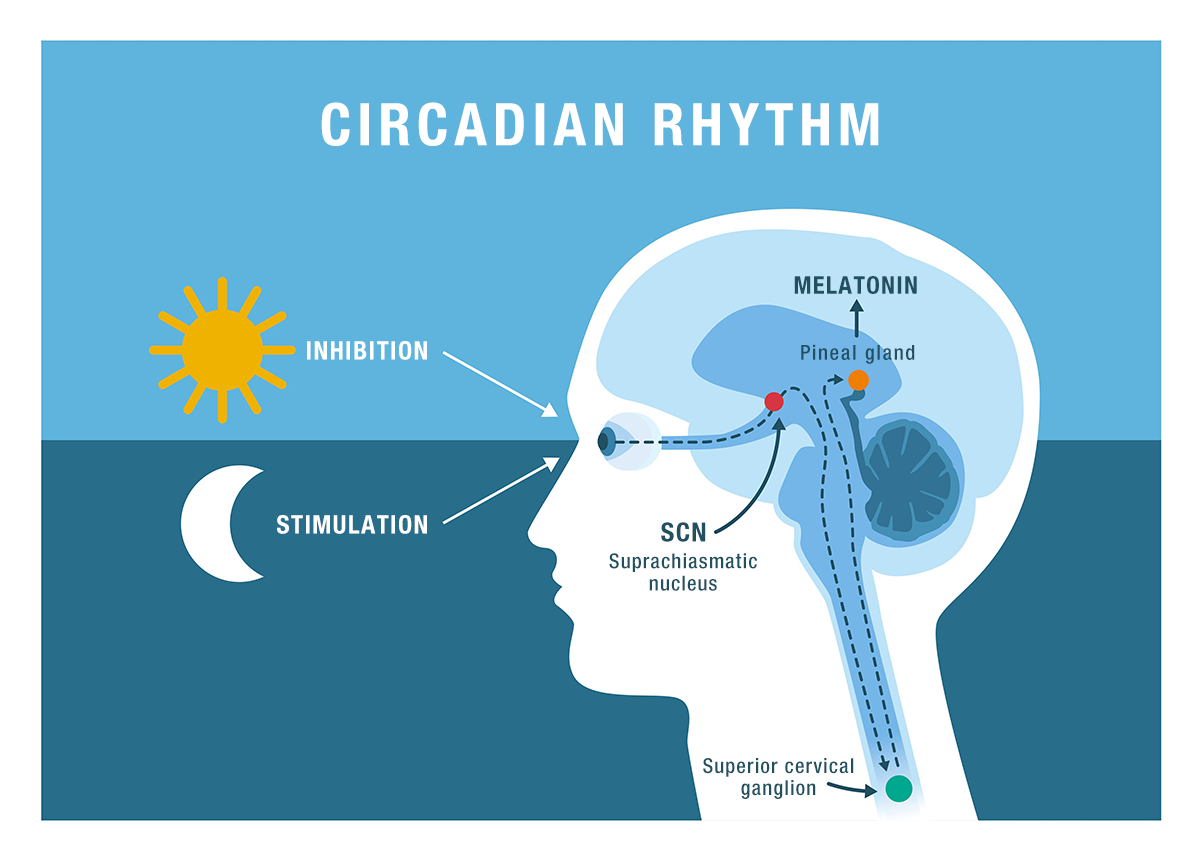
Your Sleep Hormone Takes Cues from the Sun
The Sleep Hormone Depends on Morning Light
Melatonin is known as the sleep hormone. It helps your brain and body power down at night and is a key part of what makes you feel drowsy and ready for bed. But what most people do not realize is that melatonin’s timing, strength, and effectiveness depend on how you start your day.
Morning light is not just a wake-up tool. It is the biological reset button that aligns your circadian rhythm and determines when and how much melatonin will be released later. Without that strong early signal, your body’s internal clock drifts. You may still produce melatonin, but it will likely be too little, too late, or mistimed entirely (Czeisler et al. 1999).
You might think your sleep issues are about screen time or stress. And while those matter, many problems start twelve hours earlier — right when you open your eyes.
What Light Does to Your Circadian Clock
Your body runs on a 24-hour rhythm called the circadian cycle, which governs sleep, hormones, body temperature, digestion, and mood. The master clock that controls this rhythm lives in your brain’s suprachiasmatic nucleus (SCN). And the main thing that tells the SCN what time it is? Light (Gooley et al. 2010).
Here is what happens when you get sunlight in the first hour after waking:
- Melatonin production stops
Your brain gets the signal that night is over. It begins clearing melatonin and shifting you into a daytime state (Lewy et al. 1980). - Cortisol begins to rise
A healthy morning cortisol spike helps you feel alert, energized, and focused. It is a positive stress response that primes metabolism and brain function. - The internal clock resets
Your SCN takes the light exposure as a time stamp and counts forward about 14 to 16 hours. That is when it will signal melatonin to rise again, assuming your rhythm is stable.

Why Indoor Light Is Not Enough
Most people spend their mornings under artificial lighting that is hundreds of times dimmer than natural sunlight. Even on a cloudy day, outdoor light is far more intense than anything you will get from a ceiling bulb or phone screen (Gooley et al. 2010).
This matters because your SCN is light-sensitive, but only above a certain threshold. Sub-threshold light does not trigger the same hormonal cascade. You might feel awake on the surface, but your body clock stays confused.
This mismatch between what you feel and what your biology is doing is called circadian misalignment. It leads to:
- Trouble falling asleep at night
- Mid-afternoon energy dips
- Late-night second winds
- Reduced melatonin release
- Blunted REM cycles
What Actually Regulates Melatonin
Melatonin is made in the pineal gland, and its release is tightly regulated by light signals coming from the eyes. But it is not an on-off switch. It is part of a feedback loop tied to many daytime events.
Key regulators include:
- Timing of Light Exposure
Early bright light helps define the rest of your cycle. Light exposure after sunset, especially blue light, delays melatonin release (Chang et al. 2015). - Temperature Rhythm
Core body temperature rises in the morning and drops at night. That drop is another cue for melatonin. Without a clear temperature swing, the hormone response is weaker. - Meal Timing
Eating irregularly or late can interfere with circadian gene expression, which indirectly affects melatonin rhythms.

Morning Light Is the Best Sleep Supplement
You can take melatonin pills, use blackout curtains, or wear blue light glasses at night. But if your morning light exposure is missing, none of it works optimally.
Light exposure between 6 and 9 AM has the strongest impact on circadian realignment. Just 10 to 15 minutes outside is often enough to reset the system. Sunglasses, windows, and artificial lights all reduce the effect.
This is especially important if:
- You feel tired in the morning but wired at night
- You travel across time zones
- You use screens late in the evening
- You sleep well but still feel groggy upon waking
How to Work With Your Circadian Rhythm
- Get Light Within 30 Minutes of Waking
Step outside as soon as you can. Even cloudy morning light is potent. Avoid sunglasses and let the light reach your eyes directly, but do not look at the sun. - Keep Light Consistent Each Day
Try to get morning light at roughly the same time daily, even on weekends. This helps your SCN stay locked into a predictable rhythm. - Limit Light at Night
Reduce overhead lighting and screen time two hours before bed. Warm tones are better than cool ones. Consider dim red light for reading or moving around. - Anchor Sleep and Wake Times
Shift your bedtime only if you are also shifting your morning light window. The two must move together or melatonin will not sync properly.
The Takeaway
Your melatonin does not just respond to darkness. It depends on light — specifically the kind of light you get early in the day. Without that input, your circadian rhythm drifts, your sleep quality declines, and your energy suffers.
Sleep is not just about what happens at night.
It starts with how you face the morning.
You do not need more supplements. You need more sunlight.
References
- Czeisler CA et al. (1999) 'Stability, precision, and near-24-hour period of the human circadian pacemaker', Science, 284(5423):2177–2181. https://doi.org/10.1126/science.284.5423.2177
- Gooley JJ et al. (2010) 'Exposure to room light before bedtime suppresses melatonin onset and shortens melatonin duration in humans', The Journal of Clinical Endocrinology & Metabolism, 96(3):E463–E472. https://doi.org/10.1210/jc.2010-2098
- Lewy AJ et al. (1980) 'Light suppresses melatonin secretion in humans', Science, 210(4475):1267–1269. https://doi.org/10.1126/science.7434030
- Chang A-M et al. (2015) 'Evening use of light-emitting eReaders negatively affects sleep, circadian timing, and next-morning alertness', Proceedings of the National Academy of Sciences, 112(4):1232–1237. https://doi.org/10.1073/pnas.1418490112



















